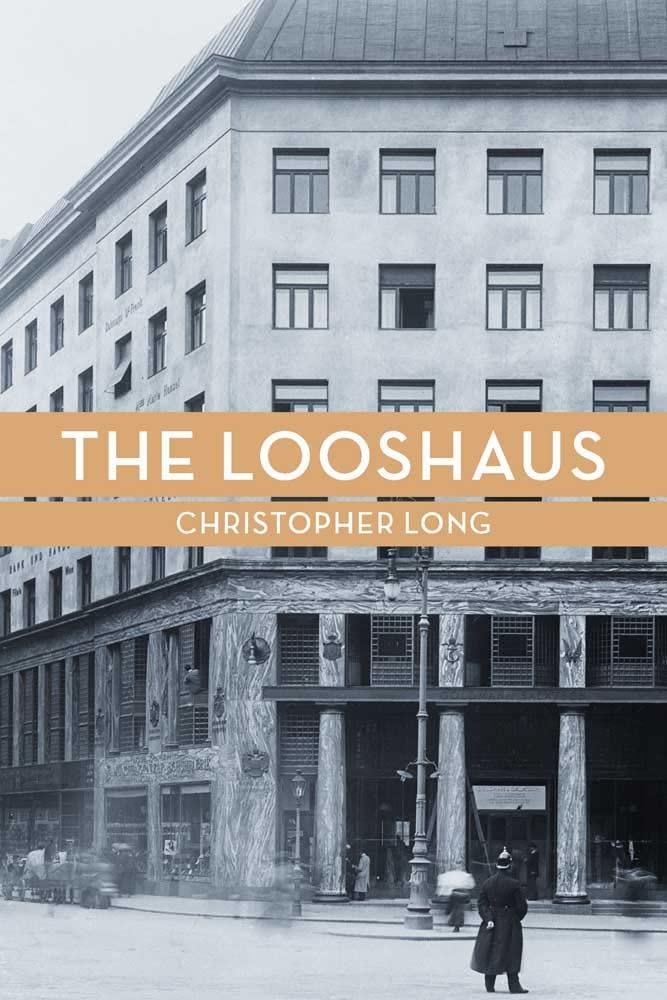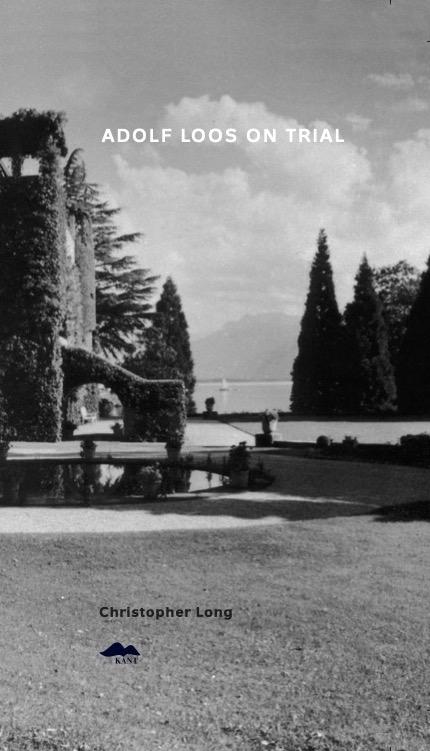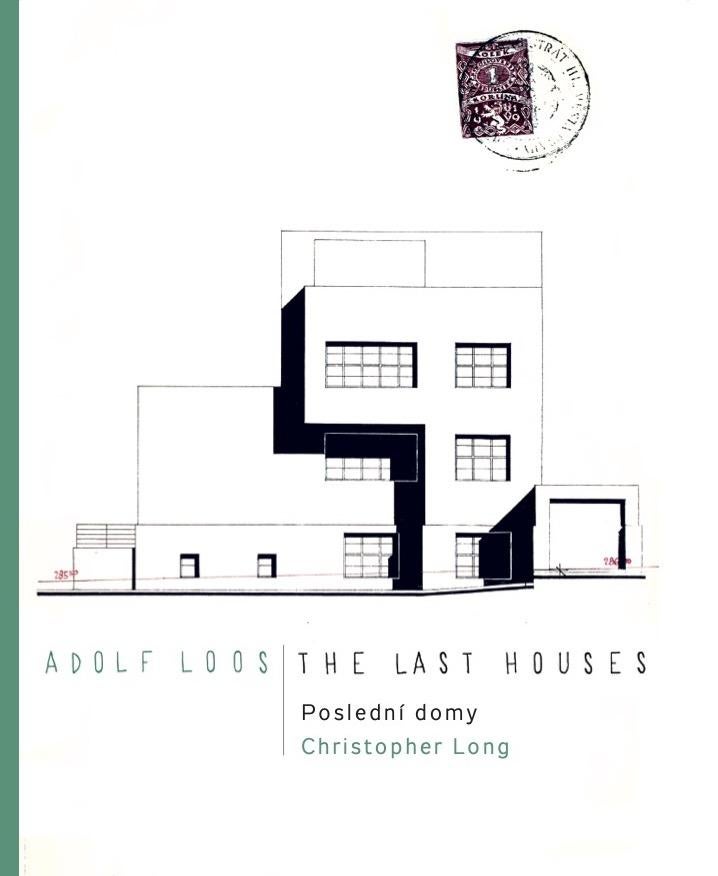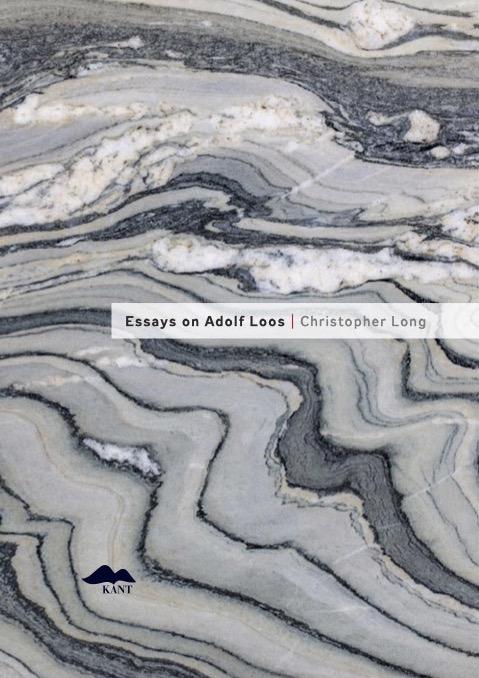Professor Long’s Scholarship Praised in The New York Review of Books

Adolf Loos was one of the most influential European architects of the early twentieth century, often noted for his literary discourse that foreshadowed the foundations of the entire modern movement. The School of Architecture’s own architectural historian Professor Christopher Long is one of the leading experts on Adolf Loos and has published four books about the controversial architect and social critic.
In the most recent issue of The New York Review of Books, architectural critic Martin Filler reviews several of Long’s books in a long-form essay about the architect’s life, notable works, and his ideas about design. Of the six books referenced in the article, plus Loos’ own essay “Ornament and Crime,” four were written by Long: Essays on Adolf Loos, The Looshaus, Adolf Loos: The Last Houses, and Adolf Loos on Trial.
Over the course of the 4,000+ essay, Filler praises Long’s scholarship as “excellent,” “definitive,” “skillful,” and “illuminating,” and he closes with the remarks:
“With a sour irony that recalls the flavor of Loos’s seemingly offhanded but precisely aimed feuilletons about contemporary culture, Christopher Long, our finest present-day interpreter of this complex, contradictory, but ultimately confounding modern master, gets it absolutely right: ‘It may be that there is no truth after the fact without ornament.’”
Trained as a cultural historian, Professor Long’s scholarly approach draws from cultural and intellectual history, as well as social history and cultural anthropology. His dissertation was a study of the Viennese architect and designer Josef Frank. Since then, he has written extensively on various aspects of Central European modernism. He has also published monographs on several notable Central European émigré architects and designers in the United States.
Check out the full article in the April 3, 2023 issue of The New York Review of Books or online here. Below are descriptions of Long’s books about the architect, representing over a decade of research, analysis, and insights.
----
The Looshaus
Yale University Press (2012)
When it was completed in 1911, the Goldman & Salatsch Building in Vienna, commonly known as the Looshaus, incited controversy for its austerity and plainness. It represented a stark rejection of the contemporary preference for ornamentation, though its architect, Adolf Loos (1870–1933), had intended it to preserve Viennese tradition within a new modernist language. The heated debate that ensued among critics and the public set the project apart, distinguishing it as one of the most important and contentious buildings of the early 20th century.
In celebration of the Looshaus's centennial year, Christopher Long, a leading authority on Viennese architectural history, brings to light extensive new research and careful analysis that dispel long-held myths about Loos, his building, and its critical reception. The book, which features new color photography and a vast array of archival materials in print for the first time, tells the remarkable story of the Looshaus's design and construction, the political and social restlessness it reflected, and the building's fundamental role in defining the look of modernism.
---
Adolf Loos on Trial
KANT (2017)
In early September 1928, the police in Vienna arrested the famed architect Adolf Loos. The charge was child molestation. Two young girls (and eventually a third), ages 8 to 10, alleged that Loos had touched them inappropriately and caused them to commit indecent acts while he was drawing nudes of them. Almost immediately, the press caught wind of the arrest, and a great scandal ensued. What followed was a very public affair that culminated in a sensational trial. The case became a cause célèbre, pitting Loos and his supporters against his many detractors. But the accompanying controversy was about more than whether Loos was guilty or not: like almost everything in Austria in the late 1920s, those involved and the public at large saw the events through powerful political and cultural lenses. The arrest and subsequent trial not only set the forces of the right against those of the left, but, also, the city’s avant-gardists against their conservative critics.
---
Adolf Loos: The Last Houses
KANT (2021)
Perhaps no one was more polemical in early 20th-century European architecture than Adolf Loos (1870–1933), the great modernist architect whose teachings against the Vienna Secession movement and emphasis on utilitarian design influenced architectural trends for years to come.
This publication focuses on the final three years of Loos’ career, during which he designed a number of houses using his own Raumplan concept of spatial planning. The Villa Winternitz was the very last house completed during Loos’ lifetime and remains a perfect example of the architect’s artistic maturation. Christopher Long, one of the leading scholars on Loos, presents new ways of understanding the architect’s radical ideas about space and details how his practice evolved over the course of his career. Alongside his insightful scholarship are numerous plans and photographs of Loos’ final works, presented together for the first time.
---
Essays on Adolf Loos
KANT (2020)
In this collection of essays, noted architectural historian and University of Texas professor Christopher Long (author of Adolf Loos on Trial) examines some of the many influences that shaped the work of the great architect Adolf Loos (1870–1933). Long’s finely tuned essays on subjects such as Loos' time in America, his famous essay "Ornament and Crime" and other subjects, are at once brief excursions into Loos’ rich and complex intellectual world, and an attempt to shed light on an important time in the history of architecture and design.
Long is deeply interested in Loos as an architect, but he is even more drawn to his profound and unique intellect, and to the clarity of mind with which Loos managed to probe and understand the realities of modern life. Loos, as Long writes, saw that “the problem of modernism was not the problem of style, but the problem of understanding how the world was changing.”
---
Photo credit: Thomas Ledl, CC BY-SA 4.0, via Wikimedia Commons





